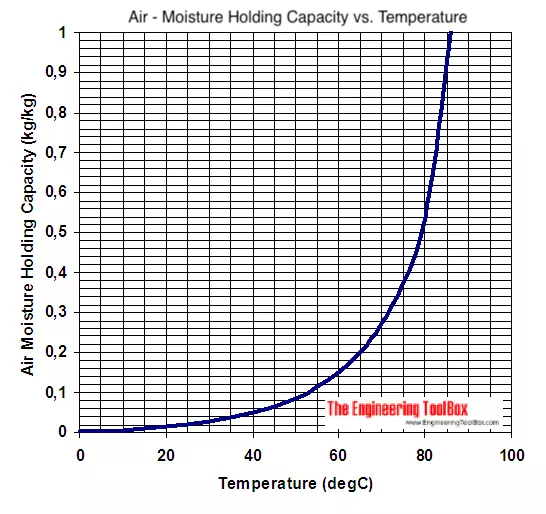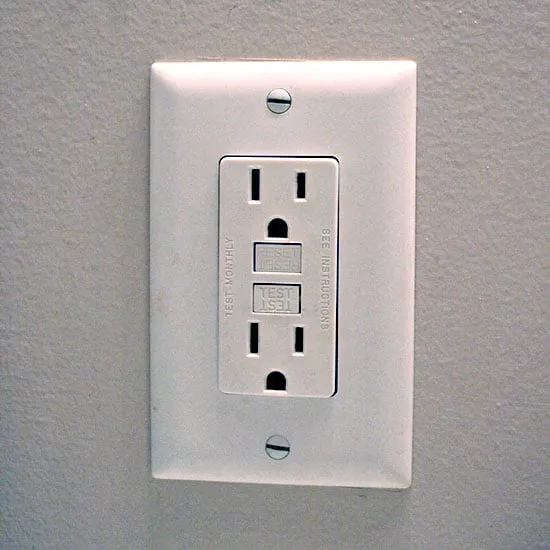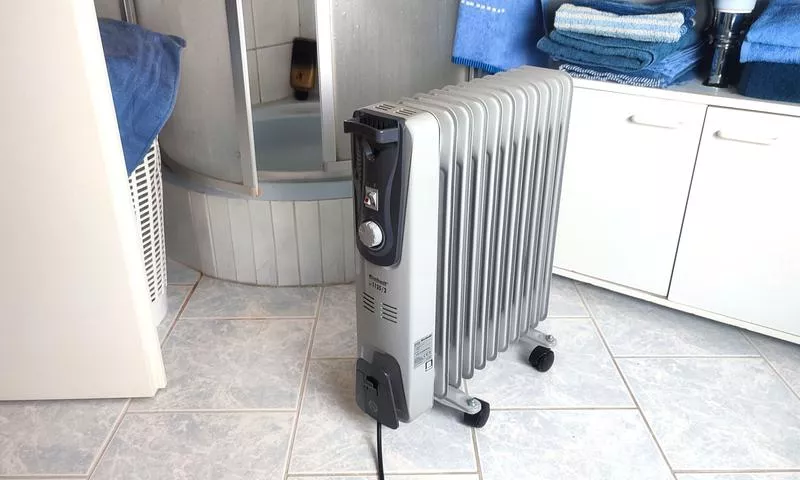Can you use an oil-filled radiator in a bathroom? Or will it take damage from the humidity, or even be a safety threat?
In this article, we’re going to check whether and how to use oil-filled radiators in bathrooms, along with the necessary safety precautions.
Quick Answer: Yes, you can use an oil-filled radiator in a bathroom. The large metal heating body is completely safe, even when water is splashed on it. Only the front panel of an oil-filled radiator contains sensitive electronics. So, avoid exposing it to water. An electric shock from an oil-filled radiator by accident is almost impossible unless you really try. Also, oil-filled radiators need no ventilation.
If you are looking for a safe bathroom radiator, I recommend having a look at this Pelonis oil-filled radiator (click to see my review).
But actually, you can use any oil-filled radiator. They are all very similar.
Are oil-filled radiators safe in bathrooms?
Oil-filled radiators are the safest space heaters for humid and closed areas like bathrooms.
Unlike other space heaters, there is no burning process involved, and the heating element and circuit are covered within the large metal body and below the front panel.
Let’s have a look at all the different reasons why oil-filled radiator heaters are safe for heating your bathroom.
#1 Oil-filled radiators are fully enclosed systems
Oil-filled radiators have channels inside metal fins or columns or sometimes a single flat panel.
In the channels, thermal oil circulates, absorbing the heat from the heating element, and warming up the metallic surface.
The best thing is that the high-power heating components are enclosed inside this metallic body and are not exposed to water sprinkles.
So, oil-filled radiators are safe as there is no water damage and short circuit risk.
However, it is not like a lot of water will not damage it.
Obviously, if you accidentally pour a glass of water at your oil-filled radiator, water will enter into it, and you know the consequences (short circuit or any electrical hazard)
Especially the front panel, which contains sensitive electronics (and maybe a thermostat), is prone to water damage.
Even though these electronic components are also embedded in a casing, they are not waterproof.
So, try to keep your oil-filled radiator away from water. Even if the risk of damage is low.
#2 Oil-filled radiators reduce the relative humidity
In oil-filled radiators, a heating element heats the oil, which transports the heat to the large metal surface area.
When your bathroom’s temperature increases, the relative humidity decreases, because hot air has a much higher water-holding capacity than cold air.
So, water won’t be able to settle on your (hot) oil-filled radiator and damage any parts.
But I’d recommend not leaving your oil-filled radiator in the bathroom after use. Then, humidity doesn’t build up on the heater when the bathroom is cool again.
 Water-holding capacity of air with increasing temperature: Hot air can holt a lot more water than cold air.
Water-holding capacity of air with increasing temperature: Hot air can holt a lot more water than cold air.
#3 Oil-filled radiators do not need ventilation
Fuel or gas-burning space heaters always need ventilation, since they burn the oxygen in a room.
Luckily, that’s not the case for oil-filled radiators.
In an oil-filled radiator, there is no chemical fuel-burning process such as in fuel or gas-based heaters.
Therefore, they do not produce carbon monoxide or other toxic gases. This makes the radiators ideal for small rooms or rooms with poor ventilation.
Safety tips for using oil-filled radiators in bathrooms
No doubt, it’s safe to use oil-filled radiators in bathrooms, but still, radiator heaters are electrical devices, and I’d recommend not messing with them and using them carefully.
I will highlight some safety precautions for using your heater in the bathroom to enjoy your warm bath safely.
#1 Place your oil-filled radiator in a corner exposed to as little water as possible
When setting an oil-filled radiator in a bathroom, make sure to put it in a place where it’s not exposed to too much water.
Water exposure could damage your oil-filled radiator.
Yes, I’ve been talking about how safe oil-filled radiators are with water sprinkles throughout this article. But still, due to the constant exposition of water sprinkles, water would manage to make its way into the heater and may cause hazards.
The best practice is to find a place in your bathroom that remains dry or with as little water as possible.
#2 Connect the power cord tightly
Oil-filled radiators run on electricity, so you need to plug them into a wall outlet to power them. In this case, there is a risk of electric shock or short circuits if the cord is not tightly connected.
When you don’t connect the cord firmly, water will find its way through small gaps between the outlet and the power plug.
So, make sure to insert the plug of your radiator completely, leaving no space for water.
You should also check your power cord for scratches and damage. If the power cord is faulty, replace or tape it.
#3 Use a secure wall outlet
Before placing your oil-filled radiator heater, make sure the corner you choose for your oil-filled radiator has a secure outlet to power your oil-filled radiator.
When discussing secure wall outlets, GFCI outlets are best to ensure the safety of your oil-filled radiator and yours.
As the name suggests, a ground-fault circuit interrupter (GFCI) interrupts the power if it notices any ground fault.
So, when there is even a slight current fluctuation (which can be caused by contact with water, short circuit, appliance damage, etc.), the GFCI will stop the power supply immediately, preventing any severe hazard.
I’d not recommend setting up your oil-filled radiator or any space heater in your bathroom if you don’t have a GFCI outlet installed.

What are the safest heaters for bathrooms?
Oil-filled radiators are the safest type of electric space heater for bathrooms.
But central heating or underfloor heating is always safer for heating your bathroom, just like your room, without worrying about safety precautions.
In these heating systems, the heat is transferred to the area (in our case, the area is the bathroom) through the air (fans) via ducts, and water or steam passes through pipes while the heat source is placed somewhere else in the building (usually, central point).
So, you don’t have to place your heater in the bathroom and deal with electrical wall outlets.
